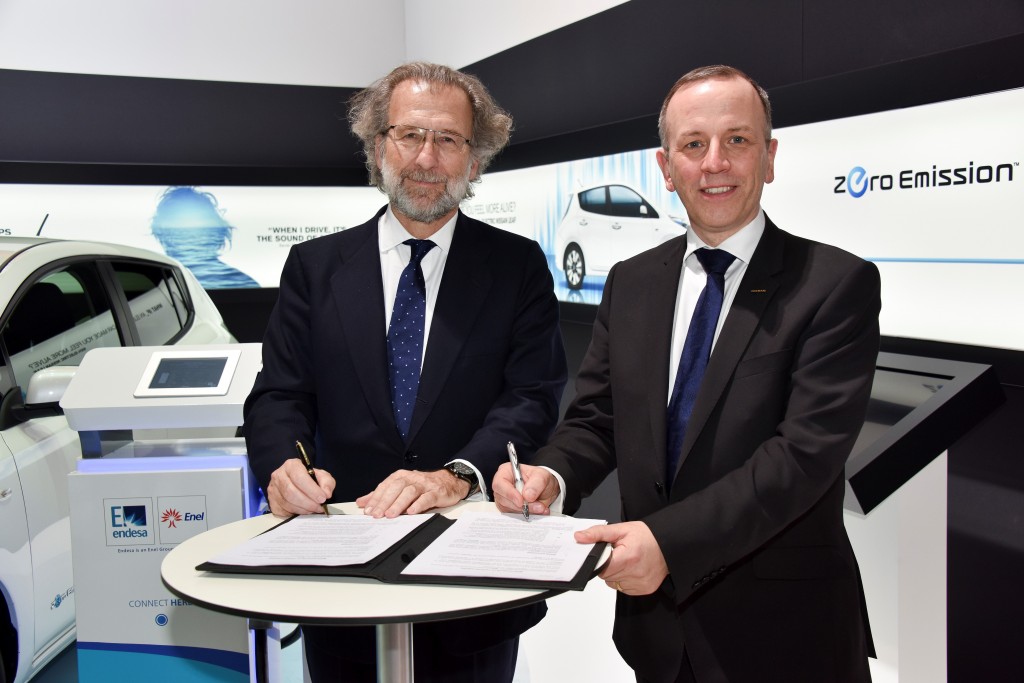
NISSAN and Endesa have signed a ground-breaking agreement at the Geneva Motor Show that paves the way for a mass-market vehicle-to-grid (V2G) system.
The two companies have pledged to work together to deliver a V2G system and innovative business model designed to leverage the technology.
Nissan – the world leader in EV sales with more than 160,000 Nissan LEAFs sold globally – is turning a page in zero-emission mobility and releasing the full potential of electric vehicle (EV) batteries with the Endesa two-way charging technology. It’s all part of Nissan’s commitment to support the entire EV ecosystem, not just the car.
The two companies have agreed to collaborate on the following:
– Introducing V2G services in the European market
– Exploring the use of ‘second-life’ EV batteries for stationary applications (including households, buildings, grid)
– Designing and evaluating potential affordable energy and mobility pack offers
Paul Willcox, Chairman of Nissan Europe, praised the innovative two-way charging system and the step-change towards a further acceleration of the EV market, saying: “We believe this innovation represents a significant development for Nissan LEAF and e-NV200 customers.
“Every Nissan electric vehicle battery contains a power storage capability that will prove useful in contributing towards smarter and responsible management of the power demand and supply of local power grids, thus reducing our EV total cost of ownership.
“Not only does this represent an opportunity for Nissan’s EV private and fleet owners, it could also support grid stability and fully demonstrate that each Nissan EV represents a tangible social asset.”
One of the main challenges for electricity management systems is to assure grid stability. This is especially relevant in countries with a high level of renewable energy generation, and will only increase in the future. The longer-term zero-emission vision is for EVs to be at the centre of a fully integrated system whereby owners can take part in wholesale energy markets using the power stored in the batteries of their electric vehicles, and thus significantly reduce their cost of operation. In a not-so-distant scenario, the EV user not only decides when and where they want to charge their EV, but how best they spend and resell the energy stored in their EV, receiving tangible financial benefits in terms of energy savings, while at the same time maximising the use of green energy.
Javier Uriarte, Head of Market Iberia at Endesa, which is Spain’s largest electric utility company, said: “The flexibility offered by V2G implementation in terms of storing and releasing green energy into the grid will further enhance the already significant and tangible benefits of electric mobility. This is why Endesa, together with its parent company Enel and partner Nissan, have decided to join efforts in promoting this technology.”
The V2G system consists of the Endesa two-way charger and an energy management system that can also integrate off-grid, and renewable, power generation such as solar panels and wind turbines. Using this equipment, a Nissan LEAF or e-NV200 owner can connect to charge at low demand and cheap tariff periods, with an option to then use the electricity stored in the vehicle’s battery at home when costs are higher, or even feed back to the grid with a net financial benefit. Electricity generated by solar panels or wind turbines can be used to charge a vehicle, to power the home or business, or to feed back to the grid.



